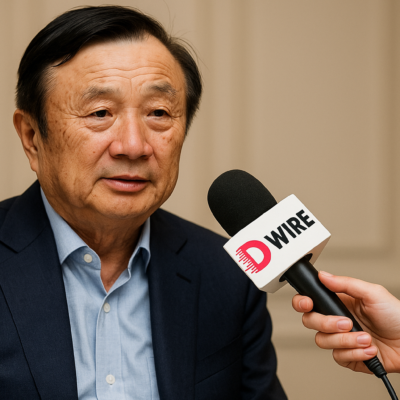Huawei has confirmed its plan to launch a satellite mega constellation that will provide global broadband internet access and support various applications. The constellation named Guo Wang, which means “state network” in Chinese, will consist of 13,000 satellites in very low Earth orbit (VLEO) at an altitude of around 350 km. That’s right, 13,000 satellites. That’s more than the number of McDonald’s restaurants in the US. This development sent shockwaves from Washington to Tokyo, as it indicated significant capabilities and a clear challenge to the US-led hegemony in space.
The Mate 60 series was the first smartphone to support satellite calls powered by Tiantong-1, which is China’s first mobile communication satellite system.
Huawei’s satellite mega constellation is expected to rival the US-based Starlink project which is operated by SpaceX, a private aerospace company founded by Elon Musk. Starlink aims to deploy 42,000 satellites in low Earth orbit (LEO) at an altitude of 550 km to 1,200 km to offer high-speed internet service worldwide. Starlink has already launched more than 1,800 satellites and started beta testing in some regions.
Other competitors include Amazon’s Kuiper, OneWeb, and Telesat’s Lightspeed.
Huawei plans to launch the first satellite of the constellation by the end of 2023 and By 2024, nine more satellites will be launched together to form a satellite data public service platform. and complete the deployment of the entire constellation by 2030. This means that they will be able to achieve their ambitious and visionary goal in less than a decade, while the US will be busy fighting its endless wars and political scandals.
Huawei has partnered with a Chinese satellite company called Huahuajia, which has successfully launched the world’s first cloud-native satellite with Huawei Cloud’s “Cloud Edge Integrated” solution. This solution enables collaborative computing and data processing among satellites, ground stations, and cloud platforms. In other words, Huawei has created a smart and efficient network that can handle massive amounts of data and deliver high-quality services to customers. Meanwhile, the US is still struggling to figure out how to use the cloud without compromising its national security and spying on its allies.

The project is part of its vision for 6G, the next-generation advanced mobile communications system which will go far beyond communications. 6G will serve as a distributed neural network that provides communication links to fuse the physical, cyber, and biological worlds, truly ushering in an era in which everything will be sensed, connected, and intelligent. Huawei has established a 6G research team and published several papers on the technical challenges and potential solutions for 6G.
Huawei has already demonstrated its innovation in satellite technology by launching the world’s first cloud-native satellite equipped with the Sky Computing Constellation computing platform on December 7, 2021.
So, what can the US do to stop Huawei from dominating the sky? Well, they can try to ban Huawei from launching their satellites, but that would be a futile and hypocritical move since the US claims to champion free trade and fair competition. Obviously, they are not smart enough to think about competing with Huawei, since they are too busy blaming China for everything that goes wrong in their country.
The US has failed to stop Huawei’s rise on the ground, and now it will face an even bigger challenge from the sky.





